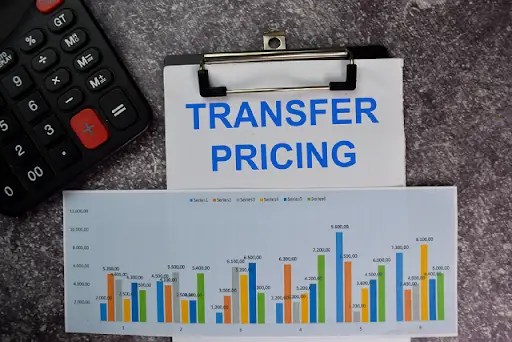
[ad_1]
Transfer pricing can be a nebulous yet vital aspect of the financial management process for multinational companies. When companies expand their operations internationally, they typically deal with other related entities, such as divisions or subsidiaries in different countries.
Ensuring that the transfer pricing policies comply with international regulations is crucial to ensure accuracy, fairness, and tax compliance. This article explores the complexities of the transfer price, its processes, the regulatory framework, and how expert advice can help businesses navigate the complexities.
Transfer Pricing and Its Importance: An Intro
Transfer pricing is the cost at which related parties trade with one another, for example, during exchanging supplies or services or even labor between departments. The purpose of transfer pricing is to establish what is the market price of the goods or services as well as intangible assets exchanged between the parties involved, making sure that the price of transfer is in line with its market price for products or services to be assigned in consideration of aspects like quantity, quality, and the geographical location.
The Organization for Economic Co-operation and Development (OECD) regulates the guidelines on transfer pricing for multinational companies. These guidelines define the rules and regulations governing transfer pricing, which ensures an accurate and fair price.
They state that the price of a controlled transaction – one conducted internally between companies adheres to the principle of arm’s length, which stipulates that the company has to offer the same amount for a controlled transaction to an uncontrolled purchase made by an outside party. That is, the transaction price must be a fair market value.
Methods of Transfer Pricing
Comparable uncontrolled price (CUP) Method This method contrasts the cost that is charged or received from controlled transactions to the cost of uncontrolled transactions. It examines the cost of similar or almost identical property traded by two separate parties in similar conditions.
Resale Price Method (RPM): RPM examines a transaction’s arm’s length characteristic by considering the gross margins achieved in similar uncontrolled transactions. This method is commonly employed in distribution and selling transactions in which the distributor or reseller needs to enhance the product’s value.
Cost Plus Method (CPM): This method focuses on the nature of arm’s length in transactions by comparing the markup in gross profit realized gross profit, along with the indirect and direct cost of the transaction.
Profit Split Method (PSM): PSM examines whether the allocation of profit or loss that is attributed by a control transaction occurs at arm’s length by using the amount of control taxpayer’s contribution to that gain or loss.
Transactional Net Margin Method (TNMM) The method calculates the arm’s-length cost of transactions by measuring the net profit margin to a base like costs, sales, or assets.
Regulatory Framework and Compliance
In India, The Finance Act 2001 introduced a separate code for Transfer Pricing under Section 92 from the Income Tax Act, 1961, which is a part of Rules 10A through 10T in the rules. These Indian regulations are built upon OECD guidelines and address intra-group transactions. These regulations establish documents for transfer pricing and include penalties in the event of non-compliance.
Documentation and Accountant’s Report
Taxpayers whose total value of foreign transactions exceeds one million rupees must maintain the prescribed documentation and information to prove that they comply with the arm’s-length principle. In addition, taxpayers need to get an independent accountant’s report for any international or specifically domestic transactions between related enterprises and submit the report before the deadline for filing the tax return for income.
Penalties for Non-Compliance
Fines for violations of transfer pricing regulations are severe. They can include penalties for failure to keep or provide documents, failing to make a report of transactions in the accountant’s reports, and keeping or providing incorrect details.
Reed Smith is a global partnership law firm with over 1,800 attorneys spread across 25 offices across the United States, Europe, Asia, and the Middle East. It was founded in 1877. The firm represents the most prestigious international companies, including Fortune 100 corporations and mid-market and emerging companies. Reed Smith is a preeminent consultant to various industries such as life sciences, financial services, healthcare, marketing, technology and shipping, media, natural resources manufacturing, real estate, and education.
[ad_2]
Ghananewshome





